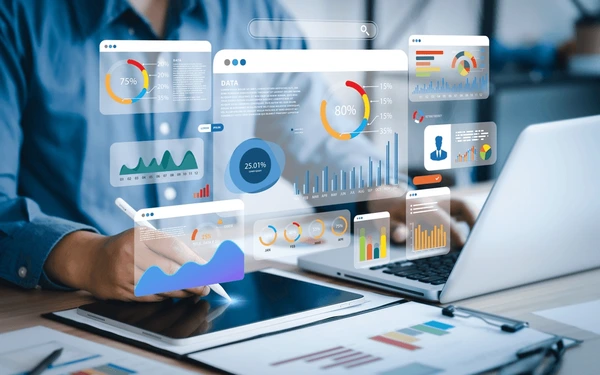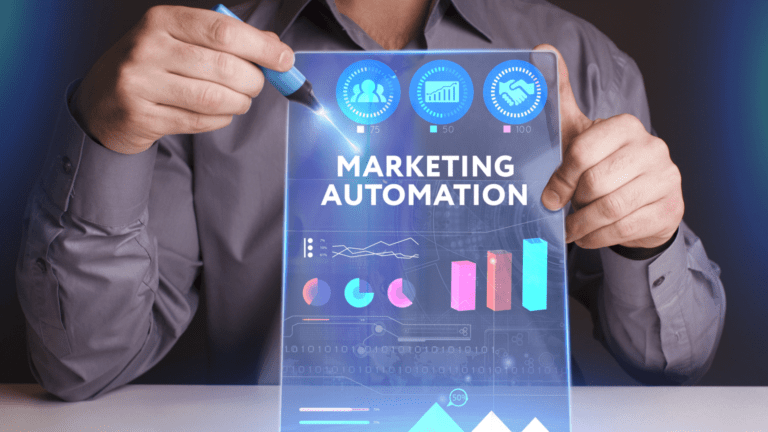Hyper-Personalization in Marketing: Strategies for 2024
Generic marketing is no longer effective in the quick-paced digital world of today. There is an abundance of content available to consumers, and marketers are vying for their attention. Businesses must use hyper-personalization to their advantage by focusing on individual behaviors and preferences rather than just general demographics when crafting marketing messages in order to stand out.
Introduction
Both marketing and consumer expectations are changing. Consumers are dissatisfied with formulaic advertising in 2024. They anticipate that companies will have a stronger understanding of their requirements, interests, and behaviors. Hyper-personalization is useful in this situation.

Hyper-personalization is the process of creating marketing communications that are current, relevant, and unique to each customer based on real-time data that is driven by AI and machine learning. We’ll look at ways to use hyper-personalization in your 2024 marketing initiatives to increase consumer engagement and provide profitable outcomes in this tutorial.
The Shift from Personalization to Hyper-Personalization
Although personalization has been around for a while, it’s frequently restricted to little tasks like adding a customer’s name to an email. Beyond that, hyper-personalization delves further into purchase history, behavioral data, and in-the-moment interactions. AI-powered, it enables companies to deliver customized content through the appropriate channel at the appropriate moment.
For instance, AI systems can assess a user’s browsing history and past purchases to suggest the best products for them. Hyper-personalization differs from typical personalization in that it uses real-time data and predictive analytics to deliver a genuinely individualized experience.
Data: The Core of Hyper-Personalization
Data is the key to the success of hyper-personalization. Hyper-personalization is impossible without thorough data on client behavior, preferences, and interactions. The categories of data that companies can use are as follows:
- Behavioral data (website browsing, purchase history)
- Contextual data (location, time of day)
- Demographic data (age, gender, income level)
It is essential that this data be gathered and handled correctly. Building client trust requires brands to make sure they abide by data protection standards, like the CCPA and GDPR.
Customer Segmentation vs. Individualization
Customer segmentation, or the grouping of consumers based on shared attributes, is a common tactic used in traditional marketing. Although segmentation has considerable effectiveness, it is unable to fully represent each customer’s distinct tastes. On the other hand, hyper-personalization emphasizes individualization, treating every client as a distinct person.

For example, marketers might utilize hyper-personalization to deliver tailored offers to individual customers based on their unique interests and historical actions, rather than sending a generic promotion to an entire group.
How Brands Can Leverage Hyper-Personalization
Predictive analytics is a vital tool for hyper-personalization. Businesses are able to forecast future requirements and behaviors by evaluating previous data. This makes it possible for marketers to predict what goods or services a potential client could find appealing and adjust their advertising appropriately.
Hyper-personalization also enables companies to make changes in real time. For example, sending a prompt, customized email reminder with a discount voucher to a consumer who has abandoned their cart could assist recover that sale.
Hyper-Personalization Across Multiple Channels
Hyper-personalization ensures a consistent and seamless experience by extending beyond emails and websites to a variety of channels. This is how it functions on various platforms:
1. Email Marketing
Hyper-personalized emails can have dynamic content based on a customer’s recent behavior, personalized subject lines, and suggestions for products.
2. Social Media
Strong targeting possibilities for hyper-personalized ads based on user involvement, interests, and behaviors are available on platforms like Facebook and Instagram.
3. E-Commerce
Hyper-personalization can be used by online retailers to provide customized shopping experiences by making product recommendations based on a user’s past purchases and browsing habits.
Challenges in Implementing Hyper-Personalization
Although hyper-personalization can increase client engagement, there are drawbacks to it as well. Data security and privacy are at the top of the list. Brands need to make significant investments in security measures as they gather more personal data in order to protect it and adhere to legal requirements.
Furthermore, the boundary between intrusion and customization is very thin. Companies have to be careful not to use data improperly or be unduly intrusive in order to make consumers feel uncomfortable.
Hyper-Personalization and Customer Loyalty
Hyper-personalization, when done well, can increase client retention and loyalty. Brands may boost lifetime value by fostering a closer relationship with customers through the delivery of highly relevant content and experiences. Customers that are actively involved in a brand are more inclined to recommend it and make repeat purchases.
Tools for Implementing Hyper-Personalization
To execute hyper-personalization, brands require the appropriate resources. Among the best are a few of these:
- AI-powered analytics platforms (e.g., Salesforce, HubSpot)
- Marketing automation solutions that can adjust in real-time based on customer data
Case Studies: Brands Leading the Way in Hyper-Personalization
1. Netflix
The recommendation system on Netflix is a perfect illustration of hyper-personalization. Netflix provides highly relevant material to each individual user based on an analysis of their viewing history and interests.

2. Amazon
Customized purchasing on Amazon is yet another example of their success. Amazon provides product recommendations to users based on their individual browsing and purchasing patterns using real-time data and predictive algorithms.
Strategies for Creating Hyper-Personalized Campaigns in 2024
Building effective hyper-personalized ads requires a data-driven strategy. Begin by coordinating your personalization initiatives with your overarching company objectives. To find out what appeals to your audience, run A/B tests. Then, use data-driven insights to adjust your marketing.
Key Metrics for Measuring Hyper-Personalization Success
One way to gauge how successful hyper-personalization is is to:
- Engagement rate: Customers’ frequency of interaction with tailored content is known as the engagement rate.
- Conversion rate: The proportion of personalized communications that result in sales or other desired actions is known as the conversion rate.
- Customer satisfaction: Successful customization is indicated by higher satisfaction.
The Future of Hyper-Personalization Beyond 2024
Hyper-personalization promises to grow in power as AI and machine learning do. We may anticipate even more sophisticated technologies in the future to help us comprehend and forecast consumer behavior, which will improve the efficiency and intuitiveness of marketing.
How to Start Your Hyper-Personalization Journey
When you first start employing hyper-personalization, concentrate on gathering and analyzing data. Assemble a team committed to putting customized plans into action, and make sure the technology you need is in place to efficiently handle and utilize client data.
Conclusion
Hyper-personalization is a need for brands to be competitive in 2024; it is no longer an option. Businesses may provide individualized experiences that connect with specific consumers and produce outcomes by utilizing real-time data, artificial intelligence, and predictive analytics.
FAQs
- What is the difference between personalization and hyper-personalization?
While hyper-personalization focuses on real-time data and individual actions to create highly individualized experiences, personalization employs broad data to customize experiences for client segments. - What tools can help with hyper-personalization?
Hyper-personalization can only be implemented with the help of marketing automation technologies and AI-driven platforms such as Salesforce and HubSpot. - How can hyper-personalization improve customer engagement?
Hyper-personalization raises the possibility of consumer engagement and conversions by providing timely, relevant material based on individual preferences. - What data is needed for hyper-personalization?
Contextual (location), behavioral (browsing behaviors), and demographic (age, gender) data are needed for hyper-personalization. - How can businesses avoid overstepping with hyper-personalization?
In order to avoid becoming obtrusive, brands should focus on value-driven customization. Respecting privacy regulations and being transparent about how data is used are essential.







